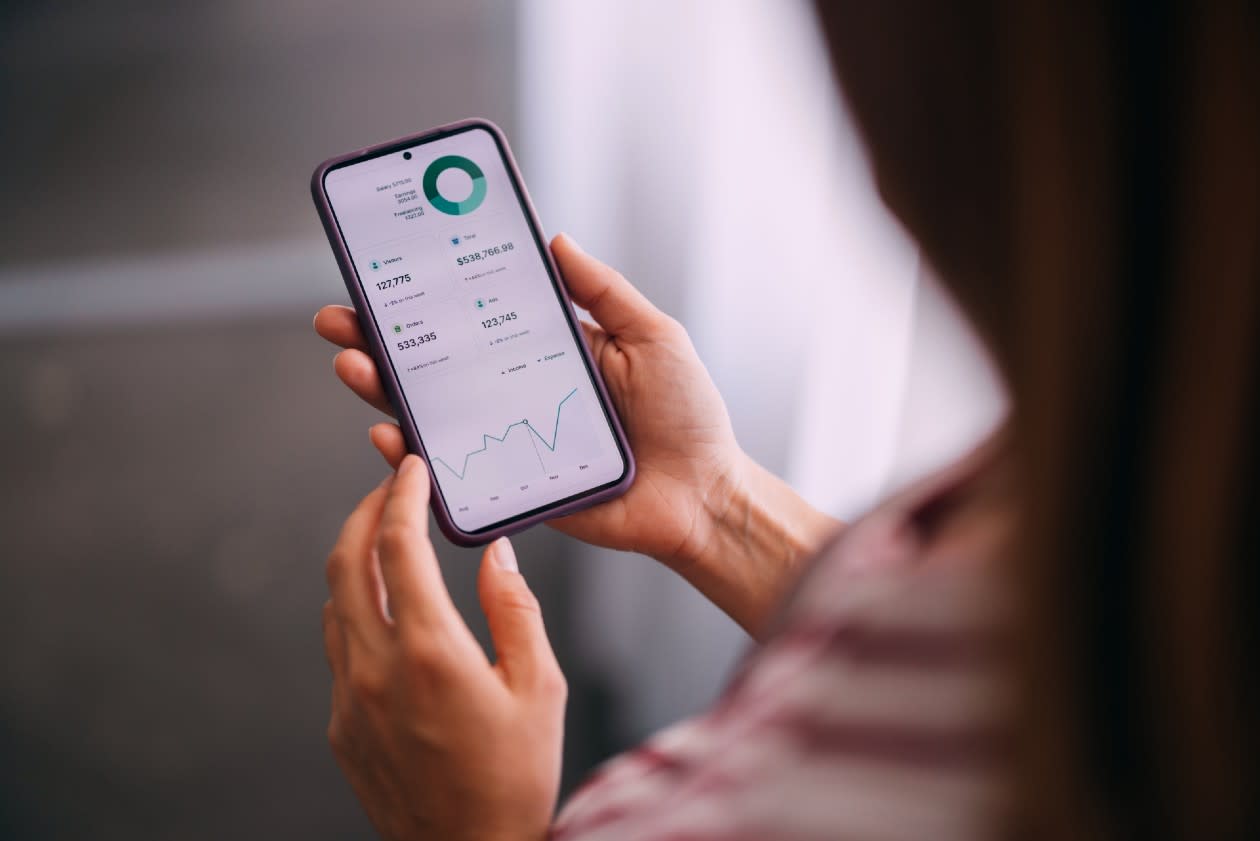No one could’ve predicted how this year would be panning out.
It almost feels like a cliché starting a review of the year with that line. But it couldn’t be truer for 2025 so far.
It perhaps wasn’t unexpected that Trump’s second term as US president would be an erratic one. His so-called ‘Liberation Day’ on 2April cemented that view for many, and it caused significant market volatility.
Elsewhere, the threat of global war seems to be an increasingly real one, with tensions ongoing between Russia and Ukraine and in the Middle East.
Against this backdrop, global stock market returns have been muted this year, though they vary between countries.
So how have the investment trusts we picked performed in the first six months of the year?
Remember six months is a very short timeframe, and all these trusts are designed to be held for the long term (at least five years).
Investing in these trusts isn’t right for everyone. Investors should only invest if the trust’s objectives are aligned with their own, and there’s a specific need for the type of investment being made.
You should understand the specific risks of a trust before investing, and make sure any new investment forms part of a diversified portfolio.
This isn’t personal advice or a recommendation to invest. Remember all investments and any income they produce can fall as well as rise in value so you could get back less than you invested. Past performance is not a guide to future returns. Yields are also variable, and no income is ever guaranteed. If you’re not sure an investment is right for you, ask for financial advice.
Closed-ended funds can trade at a discount or premium to the net asset value (NAV). Performance numbers below are shown in share price terms.
All the investment trusts featured here have the flexibility to use gearing (borrowing money to invest), which increases risk if used because any gains or losses are amplified. At the time of writing, only JPM Emerging Markets Investment Trust and Greencoat UK Wind use gearing.
Smithson Investment Trust
Smithson Investment Trust invests in small and medium-sized companies from across the globe. Smaller companies are often more innovative, and their growth potential can be huge, but the risk of failure is also higher.
From the start of this year to the end of June 2025, the trust’s provided a modest return of 0.99%*, ahead of the MSCI World SMID Index, which lost 0.34% over the same time.
Around half the trust’s invested in US smaller companies that are much less common than the big, global names we’re used to.
At the start of this year, the expectation was that US tariffs would have a greater impact on larger than smaller businesses. That’s because smaller companies are usually more domestically focused and rely less on taxed imports.
However, alongside unprecedented market uncertainty, some investors have favoured the perceived stability that established, larger business offer.
US interest rates have also remained high, unlike some other developed markets where rates have been coming down, which has kept borrowing costs high.
A weaker US dollar has benefited larger international businesses more than domestically-focused firms too.
This means US smaller companies haven’t performed as well so far this year.
Other regions have done better though, which helped the trust’s performance.
We believe smaller companies offer attractive long-term growth potential - including in an innovative market like the US - but they can be volatile.
The trust usually invests in 25-40 companies. This is a high-conviction approach which means each investment can have a significant impact on performance, both positive and negative, which increases risk.
JPMorgan Emerging Markets Investment Trust
Emerging markets cover a diverse mix of countries. From big Asian countries like China and India, to Brazil and Mexico in South America, these regions offer a lot of potential as part of an investment portfolio looking for long-term growth opportunities.
But they’re all at different stages of development and have different drivers of growth.
It could take time for these markets to develop meaningfully, so the risks are greater, and investors should expect more ups and downs – a longer investment outlook is essential here.
The JPMorgan Emerging Markets Investment Trust aims to deliver long-term growth through investing in both large and higher-risk small companies from a range of emerging economies, including India, China, Taiwan, and South Africa.
The trust’s grown 7.49% so far this year, compared with 5.35% for the MSCI Emerging Markets Index.
More broadly, emerging markets have performed better than developed ones over this time, with regions like Latin America, South Africa and Korea performing noticeably well, which has helped the trust’s performance.
Some of the trust’s largest investments currently include technology companies TSMC, Tencent and Samsung, as well as banks HDFC Bank and Capitec Bank, and Latin American e-commerce business Mercado Libre.
Personal Assets Trust
This trust’s managers aim to shelter investors' wealth just as much as grow it.
Rather than trying to shoot the lights out, Personal Assets Trust aims to grow investors' money steadily over the long run, while limiting losses when markets fall.
It tries to experience smaller ups and downs than the broader global stock market or an investment portfolio that's mainly invested in shares.
The trust’s grown 2.70% over the first six months of this year, which is similar to the rate of inflation (as measured by the UK retail price index) of 2.75%, and ahead of the global stock market.
We feel this is a good return for a more conservative trust during what’s been a volatile period for markets.
Importantly, the trust held up much better than global stock markets when they fell sharply in April. It didn’t rebound as much during the recent recovery, but that’s what we’d expect.
Over 10% of the trust currently invests in gold, which has performed well this year.
Gold has tended to do well during times of uncertainty, which is exactly what we’ve seen this year – geopolitical risks remain high, and trade tariffs and tensions between the US and China are still lingering.
Elsewhere, the trust continues to invest in established global companies, which provide long-term growth potential, and US index-linked bonds, which could shelter investors if inflation remains higher than the long-term US central bank targets. Its cash holdings could also help offer some shelter during market wobbles.
We view the trust as a good option that could provide modest growth, while giving investors some shelter during the tough times.The managers have the flexibility to invest in smaller companies and use derivatives, which, if used, adds risk. The trust is also concentrated, which means each investment can contribute significantly to overall returns, but it can increase risk.
Capital Gearing Trust
The managers of Capital Gearing Trust take a similar approach to the managers at Troy Asset Management, with a focus on preserving wealth in weaker markets.
This makes the trust an interesting choice for a more conservative portfolio. It could provide diversification alongside other multi-asset trusts or be used to provide some stability alongside more adventurous trusts or investments.
In the first six months of this year the trust grew 2.35%, which is ahead of the 2.12% for the UK consumer price index (another measurement of inflation).
The trust also held up much better than the broader global stock market during the market turbulence earlier in the year.
The trust continues to be constructed around three ‘buckets’ of assets – dry powder, risk assets and index-linked bonds.
The dry powder bucket is made up of cash, treasury bills (US government bonds) and short-dated bonds, with the aim of helping the trust hold its value during volatile markets, as we’ve seen.
The risk assets section is mainly invested in company shares, as well as some specialist trusts or funds.
This includes some property and infrastructure, which held up well during the period of stock market weakness in early April.
These companies typically have revenues that are linked in some way to inflation, for example property rents that are increased in line with inflation each year. Because of the more consistent and predictable earnings that these companies achieve, their long-term performance is usually more consistent.
It also demonstrates the benefits of diversification in a broader investment portfolio and how different assets perform well at different times.
Greencoat UK Wind
Greencoat UK Wind invests solely in operating onshore and offshore UK wind farms that are currently producing income.
It aims to pay investors with a resilient annual dividend that increases in line with inflation as measured by RPI (Retail Price Index), while preserving the value of an investment.
This means the majority of any returns will come in the form of income rather than capital growth.
So far this year, the trust has fallen slightly in value by 1.30%, partly due to lower power prices (where electricity generated by wind farms has been selling at a lower rate into the grid).
The trust’s discount has also widened and at the time of writing is 18.30%.
The UK aims for a 95% clean electricity grid by 2030, with major expansions in offshore and onshore wind. The UK has pockets of land that are ideally suited to generating renewable energy, and removing complex planning rules could boost UK renewables and infrastructure.
The trust currently offers an attractive yield (a measure of income) of 8.20%, though as always yields will vary and aren’t guaranteed.
Investors should remember that investing in a single sector like wind farms or renewable infrastructure is a higher-risk approach compared to a more diversified one.
So, we think investment trusts investing in a specific sector should usually only form a small part of a well-diversified investment portfolio.
Annual percentage growth
30/06/2020 To 30/06/2021 | 30/06/2021 To 30/06/2022 | 30/06/2022 To 30/06/2023 | 30/06/2023 To 30/06/2024 | 30/06/2024 To 30/06/2025 | |
|---|---|---|---|---|---|
Smithson Investment Trust Plc | 21.09 | -33.43 | 18.14 | -1.57 | 8.75 |
MSCI World SMID | 32.24 | -9.47 | 7.76 | 10.69 | 7.49 |
JPMorgan Emerging Markets Investment Trust PLC | 36.19 | -20.63 | 0.82 | 4.58 | 9.77 |
MSCI Emerging Markets | 26.03 | -15.01 | -2.80 | 13.19 | 6.35 |
Personal Assets Trust PLC | 9.00 | 2.19 | -1.43 | 6.32 | 5.19 |
UK Retail Price Index | 3.86 | 11.84 | 10.71 | 2.90 | 4.03 |
Capital Gearing Trust PLC | 11.54 | 2.87 | -7.67 | 5.61 | 3.87 |
UK Consumer Price Index | 2.50 | 9.41 | 7.95 | 1.98 | 3.24 |
Greencoat UK Wind PLC | -6.96 | 28.00 | -1.48 | -1.45 | -0.92 |
AIC Renewable Energy Infrastructure | 2.48 | 13.20 | -12.22 | -13.33 | 4.63 |


